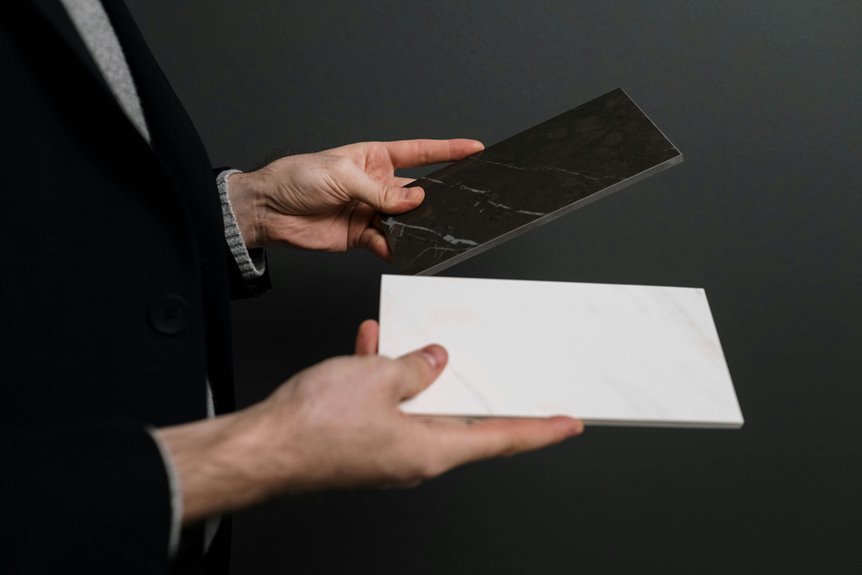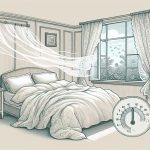If fabrics could talk, Tencel and Modal would have very different stories about breathability. You might assume they’re quite similar, but when it comes to managing moisture and airflow, their performance diverges in surprising ways. Understanding these differences can help you choose the right fabric for your needs, whether you prioritize cooling or warmth. Let’s explore how their unique fiber structures influence comfort across various climates.
Table of Contents
Key Takeaways
- Tencel fibers are smoother and more uniform, enabling superior airflow and higher breathability than Modal’s denser weave.
- Tencel quickly wicks moisture away from the skin, enhancing cooling and comfort during hot or active conditions.
- Modal absorbs moisture well but retains it longer, resulting in less efficient drying and breathability.
- Tencel is preferred for tropical and humid climates due to its ability to prevent sweat buildup.
- Modal offers moderate breathability suited for cooler environments, providing gentle warmth without overheating.
Comparing Moisture-Wicking Capabilities of Tencel and Modal
How well do Tencel and Modal handle moisture when you’re active? Both fabrics excel in moisture absorption, but Tencel has a slight edge.
It pulls moisture away from your skin efficiently, keeping you feeling dry. Modal also absorbs moisture well but tends to retain it a bit longer.
When it comes to drying speed, Tencel dries faster, which is great if you’re sweating during workouts or hot days. Modal’s drying speed is decent but not quite as quick as Tencel’s.
If you want fabrics that manage sweat effectively and help you stay comfortable, Tencel’s superior moisture absorption and quicker drying speed make it a smart choice.
Modal’s softness is appealing, but Tencel wins for active moisture management.
How Breathability Affects Comfort in Different Climates
Moisture management plays a big role in your comfort, but breathability takes that comfort a step further, especially when temperatures fluctuate. Breathable fabrics let air circulate, helping you stay cool in high humidity levels and warm in cooler climate zones. Choosing the right fabric means adapting to your environment efficiently.
| Climate Zone | Breathability Impact |
|---|---|
| Tropical | High breathability prevents sweat buildup |
| Arid | Breathability helps regulate dryness |
| Temperate | Balanced breathability aids temperature control |
| Cold | Moderate breathability prevents overheating |
| Humid Subtropical | High breathability combats moisture retention |
The Role of Fiber Structure in Airflow and Ventilation
Because fiber structure directly influences airflow, it plays an essential role in how well a fabric ventilates.
When you choose between Tencel and Modal, understanding their fiber composition helps you grasp their airflow dynamics. Tencel’s fibers are smoother and more uniform, which promotes better airflow by allowing air to pass freely through the fabric.
Modal fibers, while also smooth, have a slightly different structure that can create a denser weave, impacting ventilation. This difference in fiber structure affects how air circulates around your skin, making Tencel often feel lighter and more breathable.
Temperature Regulation and Cooling Effects of Both Fabrics
Although both Tencel and Modal offer comfort, their temperature regulation and cooling effects differ in ways that can affect your daily wear.
Both Tencel and Modal provide comfort, but their cooling and temperature regulation vary for daily wear.
Tencel excels in moisture absorption and breathability, reducing fabric insulation and heat retention, which keeps you feeling cool.
Modal provides a softer feel but tends to trap more warmth due to slightly higher fabric insulation.
Here’s what you can expect from each:
- Tencel’s smooth fibers wick moisture away swiftly, enhancing cooling.
- Modal’s plush texture offers gentle warmth during cooler moments.
- Both fabrics breathe well but differ in heat retention levels.
- Choosing between them depends on whether you prioritize cooling or subtle warmth.
Understanding these differences helps you pick the fabric that best matches your temperature needs.
Practical Applications Based on Breathability Features
Understanding how Tencel and Modal manage breathability helps you decide where each fabric shines in everyday use. Tencel excels in moisture-wicking and airflow, making it perfect for activewear applications where staying dry is key. Modal, with its silky feel and good breathability, suits bed linen that feels soft while maintaining comfort.
| Fabric | Best Practical Use |
|---|---|
| Tencel | Activewear applications |
| Modal | Bed linen |
| Both | Lightweight summer clothing |
You’ll find Tencel keeps you cooler during workouts, while Modal offers cozy breathability for a good night’s sleep. Choose based on where breathability matters most to you.
Frequently Asked Questions
How Do Tencel and Modal Differ in Environmental Impact Beyond Breathability?
You’ll find Tencel uses sustainable sourcing with eco-friendly recycling processes, making it greener overall. Modal also uses renewable wood but often involves more chemicals and less efficient recycling, so it’s less environmentally friendly compared to Tencel.
Which Fabric Is More Durable With Frequent Washing?
You’ll find that Modal offers better fabric longevity with frequent washing, thanks to its strength and resistance. However, proper washing care is essential for both fabrics to maintain their durability and appearance over time.
Are There Cost Differences Between Tencel and Modal Fabrics?
You’ll find the cost comparison shows Tencel usually falls into a higher price range due to its eco-friendly processing, while Modal often costs less, making it a budget-friendly option without sacrificing comfort or quality.
How Do Softness and Texture Compare Between Tencel and Modal?
You’ll notice a softness comparison shows Modal feels smoother and silkier, while Tencel offers a slightly firmer, more natural feel. The texture differences make Modal ideal for delicate fabrics, whereas Tencel suits sturdy, breathable garments.
What Types of Clothing Are Best Suited for Each Fabric?
Think of Modal as your comfy blanket—perfect for sleepwear choices, wrapping you in softness. Tencel acts like a gentle breeze, ideal for activewear options, keeping you cool and fresh during movement.
- Spunbond Nonwoven Fabric: Production, Properties, and Uses - July 12, 2025
- The Complete Comparison: Woven vs. Nonwoven Tote Bags - July 12, 2025
- Is Felt a Nonwoven Fabric? An Industry Explanation - July 12, 2025







